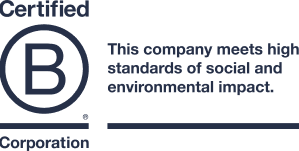We are at a pivotal time in our history. Humans have achieved so much and have made countless discoveries and innovations.
Much of this success attributes to our technological innovations. Even though the sheer volume of production has changed, we can trace our current model back to the innovations of the Industrial Age.
Back then, an increase in production and cost-effective production methods were the only goals. In recent years, however, we have begun to realize that our innovations have damaged the planet.
There has been a large draw toward sustainable materials as a way to be environmentally-conscious. If you are looking for products with this goal in mind, keep reading to discover what some of these eco-friendly materials are.
What are Sustainable Materials?
Sustainable materials are natural resources that are gathered for products that do not deplete non-renewable resources. These materials also do not disrupt the state of the environment or natural resources.
There are many different kinds of eco-friendly materials, some of which you may not have expected. There are bio-based polymers, like algae, bacteria, plants, and microorganisms. There are also materials like glass, which we can reprocess indefinitely.
Many environmentally-friendly companies use sustainable materials as a way to be eco-friendly as well as secure a profit. Here are some of those materials below.
Bamboo Fiber
Bamboo is one of the most renewable resources on the planet. It has the ability to grow at an astounding rate in varying climates. It also has natural antibacterial properties which eliminate the need for chemicals and pesticides.
Bamboo can be spun into a yarn through a process that creates a soft and silky fiber called rayon from bamboo.
Hemp
Hemp is another name for the cannabis plant. What differentiates hemp from marijuana is the THC content. The level is so low that you cannot get high from it.
Like bamboo, hemp is one of the fastest-growing plants on Earth. You can use it to make clothes, but it has a wide range of uses. Cleaning products, food, and decor are just a few of the products made from hemp. It also requires far fewer pesticides and water to sustain it.
Organic Cotton
What makes organic cotton different from regular cotton is that it isn't grown with any pesticides or synthetic fertilizers. It is also processed without the use of chemicals. It also uses much less water.
Organic cotton sold in the US must meet strict government regulations. Organic cotton only makes up less than one percent of all cotton that is grown, so it can be hard to find retailers that use it.
H&M is one of the biggest buyers of organic cotton and incorporates it into their clothes. FiveADRIFT also has towels that incorporate organic cotton.
Linen
Linen is made from flax and doesn't need fertilizers to thrive. It can also grow in many areas where other plants cannot.
The entire flax plant has use in production, meaning that every part of the plant has a purpose so there is no waste. Linen is very soft and comfortable and can last up to twenty years. It is also biodegradable as long as no chemicals are present in production.
Cork
Cork is a buoyant and waterproof material. We harvest it by taking the bark from the tree. The plant continues to live and provides oxygen.
Cork also absorbs CO2 from the air and absorbs much more to replace the bark it has lost.
Cork is biodegradable and is recyclable. During the manufacturing process, you can recycle waste into other cork products. Cork can produce flooring and clothes and is a great alternative to leather and plastic.
Soybean
The soybean is used to produce soy and tofu. Fabric can be made as a by-product from the process of making these foods.
The texture of soy fabric is comparable to silk and cashmere in softness. It also is machine washable.
A lot of the soy on the market comes from GMO soybeans, but an organic option is also available that uses fewer resources.
Econyl
Econyl is recycled nylon. This is a great material because it recycles waste, from plastic found in the ocean, to waste fabric. It feels exactly like nylon and the production is a closed-loop process, so there is no waste.
Recycled Glass
When we recycle glass, we can refine it into glass fiber or different forms of glass. The melting point of glass is also very low, so it requires much less to recycle it.
It is so recyclable that it can be processed over and over again to continually produce recycled glass products. This also reduces the amount of glass that ends up in landfills.
Some furniture companies have even begun to use glass in the production of mosaic-style countertops.
Recycled Paper
Paper is one of the most-utilized resources on the planet. Millions of trees are felled to produce paper, which has stark environmental consequences.
Every ton of paper that we recycle saves about seventeen trees. Because paper is part of so many products, many products can be recycled into more paper products.
Products that use recycled paper often specify that they have been made with recycled paper, so keep an eye out for it.
Sustainable Products With a Mission
At FiveADRIFT, we are passionate about sustainable materials and the well-being of our planet. We sell towels that are made using sustainable materials to aid in our vision of a greener Earth. All profits from our towels go towards charities that help remove plastic from our oceans.
If you would like to purchase some of our towels or learn more about our work, you can contact us to learn more.


